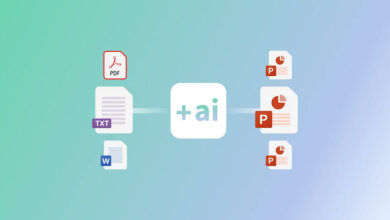7 Essential Tools in Airplane Maintenance

A vital component of aviation is plane maintenance, which guarantees the effectiveness and safety of air transport. Due to the intricate nature of aviation systems, a wide range of instruments, each designed to meet particular maintenance requirements, are required. This article explores seven key instruments that are vital to airplane maintenance, emphasizing their special qualities and practical significance.
Torque Wrenches
When it comes to aircraft maintenance, torque wrenches are essential tools because they let technicians apply precise torque to fasteners like nuts and bolts. Because excessive or insufficient torque can weaken the integrity of the connected components and cause failures, accuracy is essential. There are several different kinds of torque wrenches, such as beam, click, and digital wrenches. Although they all have the same function, the degrees of accuracy and usability vary. Digital torque wrenches, improve the effectiveness of maintenance records by offering extremely accurate readings and the ability to save data for later use.
Borescopes
Borescopes are another important tool in airplane maintenance, allowing specialists to inspect difficult-to-reach regions without removing substantial sections of the aircraft. A flexible or rigid tube with a camera or lens on one end and an eyepiece on the other makes up these gadgets. With the help of the camera and a monitor, the technician can visually analyze the interior parts of engines, airframes, and other components. This non-invasive examination technique is very helpful for finding early indications of corrosion, wear, cracks, or other flaws that, if ignored, could cause major problems. Aircraft longevity and safety are greatly increased by the use of borescopes to identify issues early.
Ultrasonic Testers
Ultrasonic testers serve an important part in non-destructive testing (NDT) during aircraft maintenance. These tools do not harm the components being examined; instead, they use high-frequency sound waves to find material defects such as inclusions, voids, and cracks. When examining composite materials, which are frequently utilized in contemporary airplanes, ultrasonic testing is especially helpful. In order to measure the waves that are reflected, sound waves are injected into the material. Variations in the reflected waves indicate the existence of faults. Because of their extreme sensitivity, ultrasonic testers are able to find minute flaws that conventional inspection techniques can overlook.
Rivet Guns
When it comes to building and repairing aircraft bodies, rivet guns are an essential instrument for aviation maintenance. The rivets, which are fasteners that connect two pieces of material, are installed with these tools. Utilizing a rivet gun, one secures a joint by inserting a rivet into a pre-drilled hole and then expanding the rivet’s end. Pneumatic and hydraulic rivet guns are among the various varieties available; each is appropriate for a particular need. Rivet guns are an essential component of the maintenance toolbox because properly placed rivets guarantee the structural integrity of the aircraft. Because of their effectiveness and accuracy, rivet guns are crucial for maintaining the strength and durability of the aircraft body.
Safety Wire Pliers
Safety wire pliers are an additional indispensable instrument in aviation maintenance, as they are employed to secure fasteners that can otherwise become excessively loose as a result of vibration. With the purpose of holding fasteners like bolts, nuts, and screws in place, safety wire is threaded through them and twisted by these pliers. The wire must be threaded through the fastening, twisted with the pliers, and then wrapped around the fastener to provide security. This keeps the fastener from losing during takeoff, which could result in serious malfunctions. With features like precision cutting edges and automated twisting mechanisms, safety wire pliers are specifically made to meet the demands of aviation repair. Even during the strain of flight, these pliers guarantee that all parts stay firmly fastened.
Oxygen Enhancer
An oxygen booster is a vital instrument for maintaining airplanes, especially those that have oxygen systems for both passengers and crew. In order to provide a constant supply of oxygen at high altitudes when the air is thin, the booster is used to pressurize and refill the aircraft’s oxygen tanks. Hypoxia, a condition produced by low oxygen levels that can impair judgment and coordination, can be avoided with the use of this equipment, which is essential for ensuring the safety and functionality of the oxygen systems. The booster functions by raising the oxygen gas’s pressure, which facilitates its effective transfer into the aircraft’s tanks. To guarantee the purity of the oxygen and prevent contamination, this procedure calls for accuracy and caution. The booster is a vital element in accomplishing the goal of maintaining oxygen systems properly.
Multimeters
When performing maintenance on an airplane, multimeters are useful diagnostic instruments for measuring electrical characteristics, including voltage, current, and resistance. These measures are essential for diagnosing and guaranteeing that the electrical systems of the aircraft are operating correctly. There are two types of multimeters: analog and digital. Digital multimeters are more accurate and user-friendly. In order to help professionals find problems like short circuits, open circuits, and defective components, they are used to test batteries, wiring, connections, and electronic components. Accurate electrical property measurement guarantees the safe and proper operation of all systems. Multimeters aid in preventive maintenance as well by enabling personnel to spot possible issues before they become serious enough to cause system failures.
Conclusion
When it comes to aviation maintenance, having the correct tools is essential. The maintenance of aircraft safety, dependability, and efficiency depends heavily on tools like torque wrenches, boosters, borescopes, ultrasonic testers, rivet guns, safety wire pliers, and multimeters. Each of these instruments contributes to the overall maintenance procedure and fulfills a certain function. These tools’ accuracy and dependability allow professionals to confidently complete their work, assuring the greatest levels of performance and safety in aviation.




